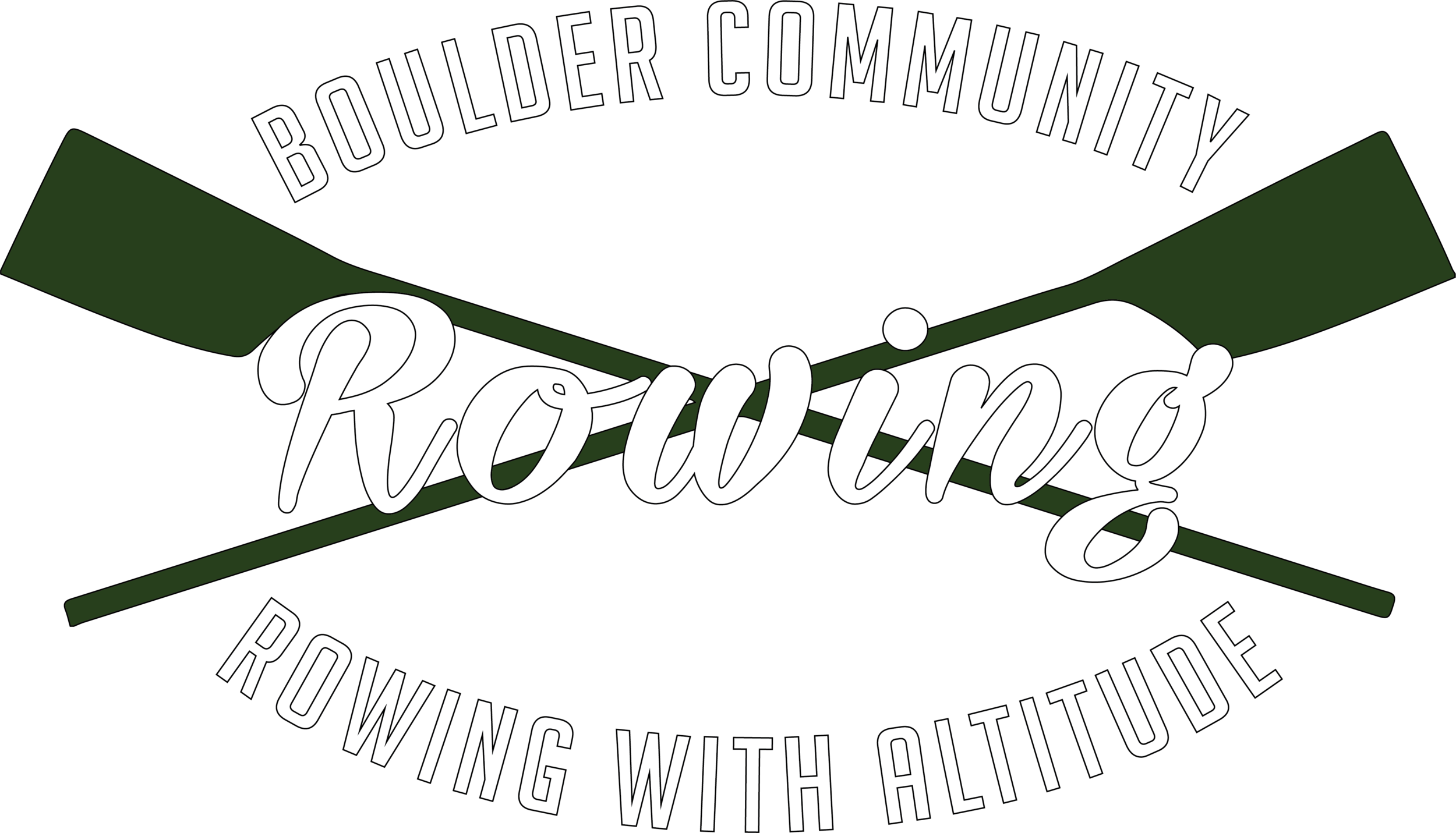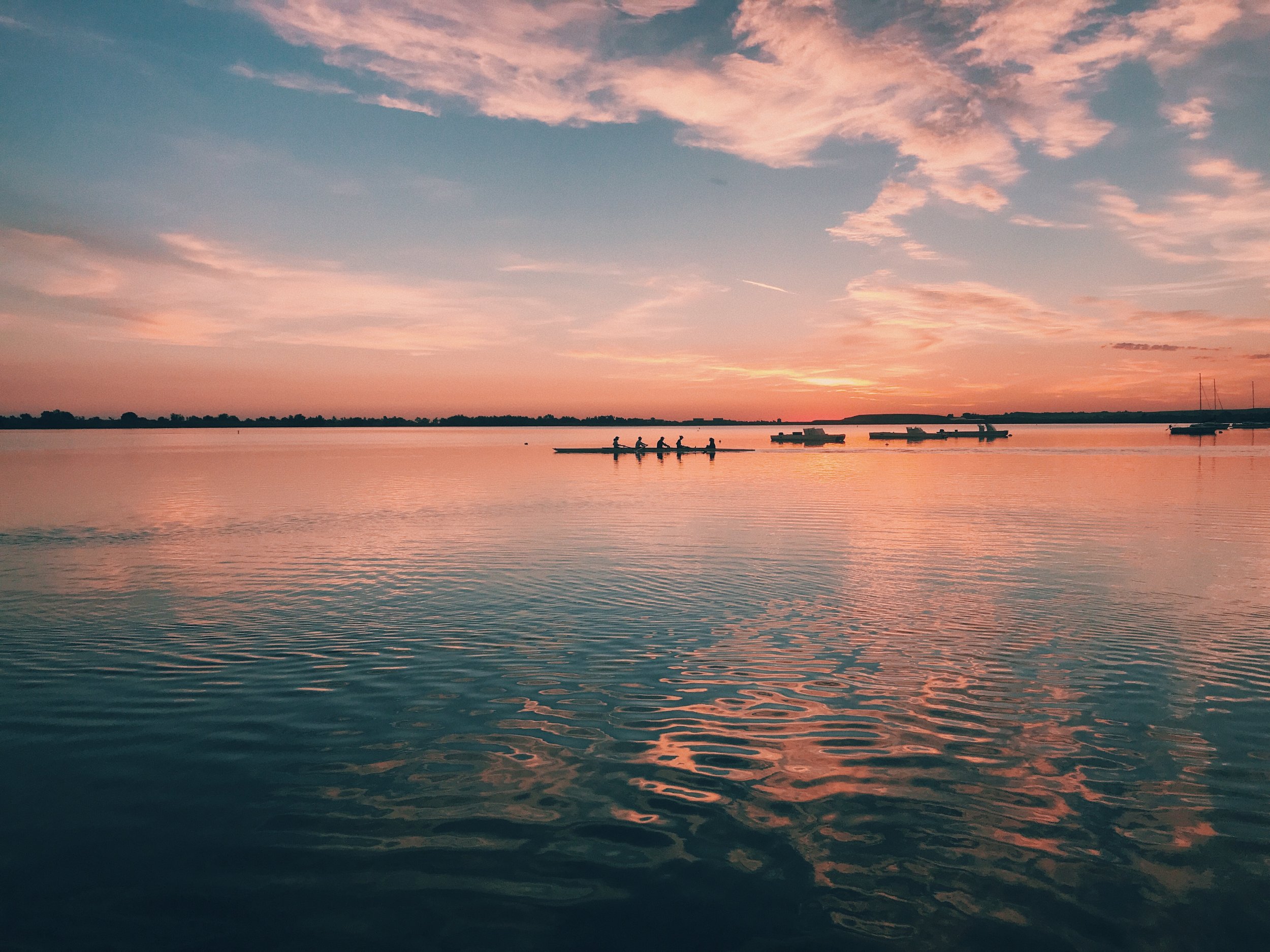Safety Requirements
The safety of the persons using the reservoir is paramount. This includes both water safety and health safety. Any violations, possible safety issues, possible violations of the BCR Athlete Safety Policy, or safety questions should be reported to and resolved with the coach or other BCR representative person. Incident reporting should also be done using the link on Boathouse Connect.
If an issue needs to be reported to a Lake Patrol representative or Boulder City employee, this should be done by the Reservoir Liaison and the BCR Safety Officer. If the issue is important and time-sensitive, another coach or club member may inform Lake Patrol of the problem. However, we should avoid having several coaches, participants etc. make these reports.
Rules and requirements of the City of Boulder for use of the Reservoir facilities must be adhered to at all times.
All current requirements for BCR members to participate in rowing on the Boulder Reservoir shall be maintained (e.g., swimming certification, liability waivers, flip tests for single scull rowers).
Viewing of the US Rowing Safety Video is required. This can be found on the US Rowing website (www.usrowing.org) under SAFETY and using the Safety Video link. The video is about 40 minutes long and the section regarding rowing in the cold is extremely important to watch prior to the start of our on-the-water season.
The U.S. Rowing SafeSport Training program is required viewing for all BCR coaches and athletes. It takes about 30 minutes and must be completed every year. It is an interactive program and very informative regarding identifying and preventing various forms of misconduct. It can also be found on US Rowing website by clicking on the SafeSport link on the home page.
The following safety videos are also very helpful.
Emergency Action Plans
Emergency contacts with phone numbers will be posted on the shed.
Launches should include a first aid kit and a cell phone. Launch drivers are responsible for these.
Any safety event that occurs should be reviewed by coaches and BCR staff and appropriate “lessons learned” reviewed with the BCR members.
Actions Before Launching
In the cold-water seasons (Spring and Fall), all rowers regardless of boat type should carry a PFD. The only exception to this rule is for rowers of an 8+ that is followed closely (within about 100 yards) by a launch with a coach and enough PFDs for all members of the 8+. If many boats (generally more than 3) are on the water, it is recommended that rowers in all boats carry a PFD with them in the boat or wear them. Rowers in single sculls, doubles, and pairs should have a PFD at all times regardless of the season. Of course, PFDs can be worn by anyone at any time.
In addition to PFDs, it is good practice for rowers or a coxswain to carry a whistle, a cell phone, and some boat tools. Requirements for coxswains regarding wearing PFDs and carrying tools and communication devices are described in the section “Coxswain Safety Requirements” below.
When using club boats, if not in a coached program rowers should record the boat name and rowers’ names on the log in the shed. After rowing, the return of the boat and rowers should be indicated.
Rowers should be familiar with the waterway, traffic direction, other users of the water, and other boats and launches on the reservoir when they are rowing.
When rowing outside of a coached program, and particularly in smaller boats, it is important to row with a “buddy system” and to stay in contact. When rowing in the dark this is a requirement for smaller craft.
Weather Considerations
The “safe” threshold temperature for combined air/water temperature is 90°F. Whenever this combined temperature is below 90°F, the decision to allow rowing will be a collective decision by the coach, Safety Officer, and Lake Patrol. If rowing is allowed with the combined temperature less than 90°F, we will employ the “four oar rule” - no less than four oars must be in each shell (no singles or pairs are allowed).
Rowers not in a program but using BCR equipment must follow the decision of the coached program, or if no coached program is on the water, they cannot row with the combined temperature less than 90°F. They should also be aware of weather predictions for the time of rowing.
Under no circumstances will rowing be allowed when whitecap waves are present. Rowing is highly discouraged under any high wind condition or forecast.
Rowing should not be started or should be curtailed with the appearance of lightning within about 15 miles of the reservoir.
Rowing during darkness (early morning hours) results in added danger and risks. Boats must be equipped with proper running lights and the “buddy system” should be used or the boats should stay near to a launch.
Sculling Safety Requirements
The coaches determine if a sculler is experienced enough to row without a coach.
All scullers, who wish to row a club single must pass a flip test every year.
Coxswain Safety Requirements
Coxswains must wear PFDs in the cold temperature seasons. It is highly recommended that coxswains always wear a PFD.
Dress for sitting still in the weather, whatever it may be.
Coxswains should always have a whistle and preferably a cell phone as well.
Keep the boat with other boats when practicing in the dark.
When it is dark, make sure there are lights on the boat. The bow has the correct color on the correct side of the boat (port red starboard green), stern has a white light on the deck or a headlamp on stroke or stern loaded cox.
If the coxswain is not comfortable with the weather conditions they should consult with Coach. If they are on the water, the coxswain or the coach may terminate the practice if either feels conditions are potentially dangerous.
Sickness Prevention; COVID-19
The following is based on recommendations and requirements of US Rowing, CDC, and BCDH. The guidelines will be periodically reviewed and may be revised during the season.
All rowers are responsible for monitoring their own health. If you feel sick for whatever reason you should not attend practice.
Club members should practice good hygiene, including washing hands after group practices.
It is strongly recommended that all eligible members get their primary COVID-19 vaccination series and booster shots when eligible.
If you think you could have COVID-19, take a COVID-19 test. If positive, report this to the Coach and to the BCR Safety Officer, and isolate and follow current CDC guidelines. If the test is negative, you should wait until you feel well and retest. If the result is still negative, you may return to Club activities.
Additional Safety Notes
Rowers & Coxswains
Understand distress signals.
Understand launching and docking protocol. Follow commands of coxswain or steerperson for your crew.
If there is no coach in a safety launch and Lake Patrol is not operating (off season months) you row at your own risk and accept all liability. The ‘buddy system’ is always encouraged.
Stay with your boat in case of a capsize – use the shell for floatation until all rowers have PFDs on or are moved to a safety launch by the coach or Lake Patrol. Use the buddy system.
Always have a towel and change of clothes in your car.
Wear reflective/light colored clothing during before dawn and after dusk rowing.
Steerpersons in blind boats and all single scullers must be certified to bow by a coach.
In & On the Boats
Bow ball must be in place and secured.
Heel restraints must be secured – no more than 90° to shell keel.
When rowing before dawn or after dusk, starboard/port lights must be in place on the bow and a white light on the stern or coxswain.
Each crew, including coxed shells or blind boats must carry sound producing device – horn or whistle.
Riggers should be checked before boating to ensure they are secure. Swivels/oarlocks should be operable.
Button/collar on the oars should be firmly secured.
Hatches/bungs should be closed before launching and opened when boats are on the rack.
On the Launch
Ensure launch has sufficient PFDs for coach, passengers and recovered athletes.
Ensure launch has bailers, paddle, throw lines, first aid kit, fire extinguisher, flare kit, thermal blankets, spare gasoline.
Ensure stern and bow lights are available for before dawn and after dusk conditions.
Carry marine radio or cell phone for communication and possible rescue.
Know Your Water
Understand traffic patterns. Refer to posted Reservoir diagram.
Know the established locations of all buoys. Red/orange buoys indicated shallow or protected waters. White/red buoys map no wake zones. Stay on land side of white/red buoys.
In Warm Weather
Always have a water bottle with you in the boat.
Wear light colored clothing and hat.
Apply sunblock.
Watch the Weather
Coaches
Responsible for crew safety.
Communicate an action plan for any emergency.
Follow local, state and federal regulations concerning boating safety.
Maintain all equipment and safety launch.
Always check the weather conditions/forecast – temperature and wind.
Never row in fog or limited visibility. The entire reservoir must be visible in all directions. You must be able to see the lights on the north shore from the dock.
Never row if whitecaps are visible. All members of the crew must be comfortable before launching. Be aware of the wind indicators at the Reservoir. Windsock at 45° from vertical ~8-9 knots/9 mph.
If lightning is within 10 miles do not launch.
If on the water, return to the dock immediately.
US Rowing Safety Video

